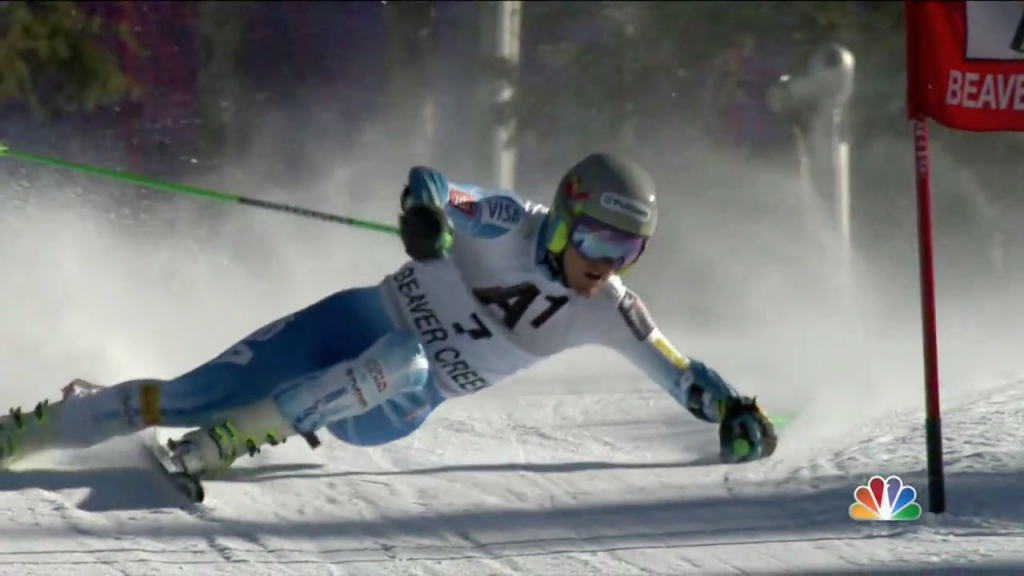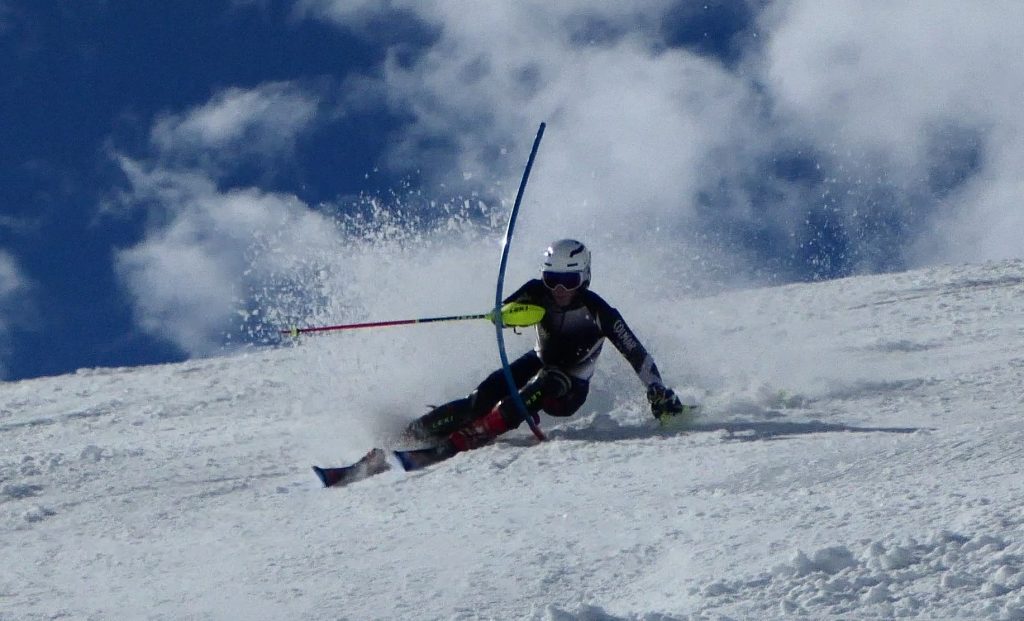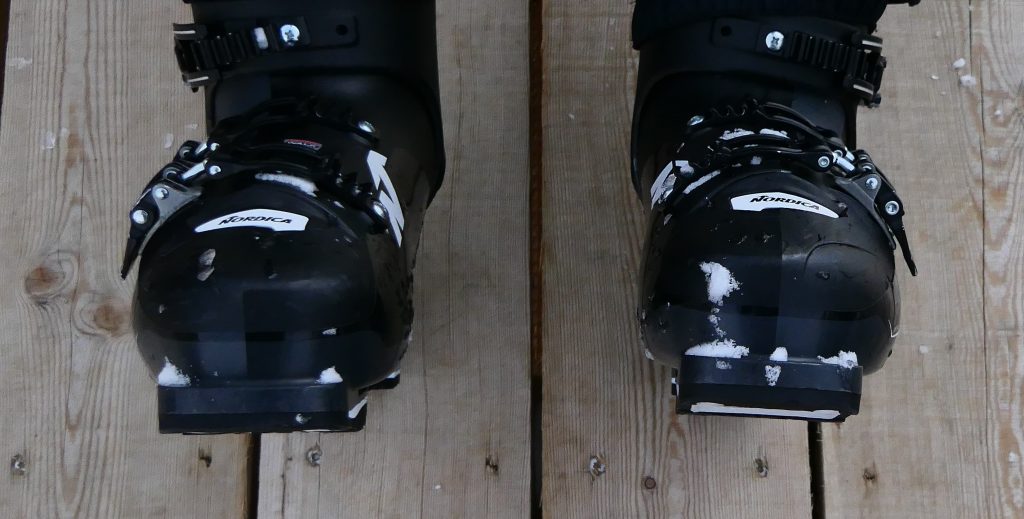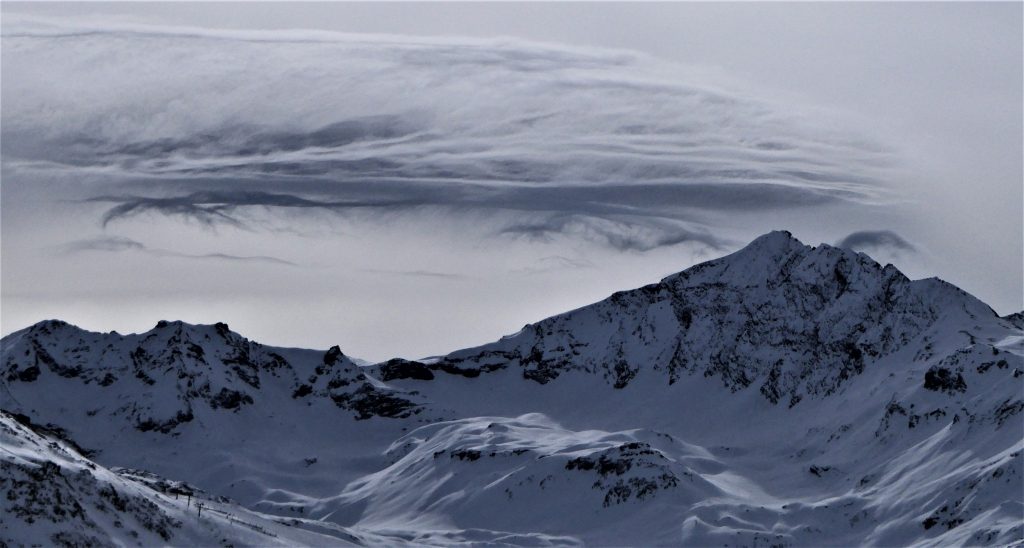Choosing the Red Ski Pill!
When asked to describe what to do to make a turn on skis Sam was hesitant. This is normal when people have been exposed to conventional ski instruction. When skiing for the camera all the awkward movements Sam was making were derived straight out of the ski instructor’s manual – which demonstrated that he is a really good and capable student but had been effectively taught nonsense. We only had a few hours to straighten this out and leave Sam with some positive feelings regarding his real potential in skiing.
We started the session by putting Sams bindings back into place so that his ski boots were centred over the centre line of his skis. Later on his “fore/aft’ issues were shown to not be equipment related – but a basic issue of angulation.
The goal today was to introduce Sam to three fundamental facets of skiing – Dynamics, Angulation and Pivoting. Those three facets are are interconnected so they are best developed in parallel. The hard part is that the lack of sensible technical information in conventional ski instruction means that it’s like starting again from zero.
Dynamics
I’m not going to repeat the lesson here – suffice to say there’s a page here with a basic explanation and covering the exercises we used. http://madeinmountains.com/dynamics/
The following image shows the extreme inclination that is achieved with dynamics (Dynamics being the appropriate branch of Newtonian Mechanics – instead of Statics). Dynamics is the physics of disequilibrium – the absolute antithesis of “balance”. Skier limits are defined by “dynamic range” – not by ability to balance. There is NO balance in skiing – only disequilibrium.
Sam successfully began to move his centre of mass in the correct direction – into the turn and towards the snow (like a motorbike turning) instead of the opposite (useless) direction he was previously taught.
Sams “timing” was also changed so that he was skiing on one leg at a time – with a leg extension maintained as the centre of mass went down into the turn and back up out of it. Notice the skiers in the following photos are not bending their outside legs in the middle of the turns.

We briefly touched on the fact that the dynamics of coming up and out of a turn are essential to competent skiing off piste – in fact that part is the complex part of skiing – greatly assisted by “angulation”.
We did some skating turns on the flat to clarify even more that it’s all about moving that centre of mass – in this case incrementally.
Angulation
Hip Angulation is basically covered here: http://madeinmountains.com/chiskiing/
Angulation is really about being active with the largest joint in the body – the hip joint. You tilt forward at the hips then perch yourself on one hip joint and rotate the upper body on it. Add inclination and you have the photo see below – my current favourite angulation photo of my student Alex…

Angulation is necessary for sustaining pressure on the fronts of the skis and permits even skiing off piste on the fronts of the skis without the risk of face planting!
Pivot
Just go here… http://madeinmountains.com/pivo/
Here’s a video of my showing off the quality of “pivoting”…
Prior to introducing pivoting we did some side slipping to show that the real control comes from the centre of mass – and how to use it subtly as a sort of joystick. Pivoting in its pure form is when the skis travelling sideways and through a turn go from uphill edge to uphill edge – always braking – and the skier’s body stays close to “vertical”. The first half of the turn is done on the outside edge of the ski – and there needs to be awareness of a separation of the edge of the foot from the edge of the ski (inside edge of foot and outside edge of ski simultaneously). The lateral support of the shaft of the ski boot and closeness of stance determines which edge the ski is on. This is a “braking” form of skiing that needs a pole plant downhill to control the centre of mass – weight firmly on the pole.
The purpose of introducing the pivot at this early stage is that it clarifies that you can start a turn from either edge of the uphill ski and it is not necessary to stem, push out or step that ski onto its inside edge to make a turn.
Boot Cuff Alignment
Sam’s boots are under-edged – which explains why he struggles for grip in his turns. The soles should be horizontal in the photo below. (Legs straight, feet hip width apart – the bone structure is fixed and the boots need to accommodate this) The cuffs need to be adjusted to tilt more outwards to correct for this.

Today’s views…



